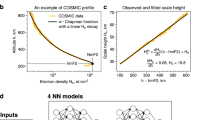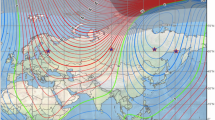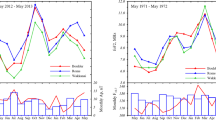Abstract
DURING the War, many new ionospheric stations were instituted in different parts of the world to serve the operational requirements of the Allied Forces. As a result, there have become available, for the first time, sufficient data to provide a rough general morphological picture of the F2 layer of the ionosphere. A study of these data has disclosed the remarkable result that, although ionospheric events in the E and F1 layers are similarly reproduced at the same local time on the same day at all locations on a line of constant geographic latitude, the same is by no means the case for the F2 layer. It has also been confirmed, as was suspected earlier, that under conditions of symmetrical solar illumination, an asymmetry of ionization exists for certain station on the same longitude and situated at equal latitudes north and south of the equator.
This is a preview of subscription content, access via your institution
Access options
Subscribe to this journal
Receive 51 print issues and online access
$199.00 per year
only $3.90 per issue
Buy this article
- Purchase on SpringerLink
- Instant access to full article PDF
Prices may be subject to local taxes which are calculated during checkout
Similar content being viewed by others
References
Appleton and Naismith, Proc. Roy. Soc, A., 150, 685 (1935).
Author information
Authors and Affiliations
Rights and permissions
About this article
Cite this article
APPLETON, E. Two Anomalies in the Ionosphere. Nature 157, 691 (1946). https://doi.org/10.1038/157691a0
Issue date:
DOI: https://doi.org/10.1038/157691a0
This article is cited by
-
Exploring Earth’s ionosphere and its effect on low radio frequency observation with the uGMRT and the SKA
Journal of Astrophysics and Astronomy (2023)
-
Ionospheric single crest events at different altitudes and activity levels observed by Swarm constellation
Astrophysics and Space Science (2023)
-
Analysis of ionospheric GPS-TEC on intense geomagnetic storms over the equatorial ionization anomaly region of India during 2015–2020
Astrophysics and Space Science (2023)
-
The swarm Langmuir probe ion drift, density and effective mass (SLIDEM) product
Earth, Planets and Space (2022)
-
Forecasting global and multi-level thermospheric neutral density and ionospheric electron content by tuning models against satellite-based accelerometer measurements
Scientific Reports (2022)



